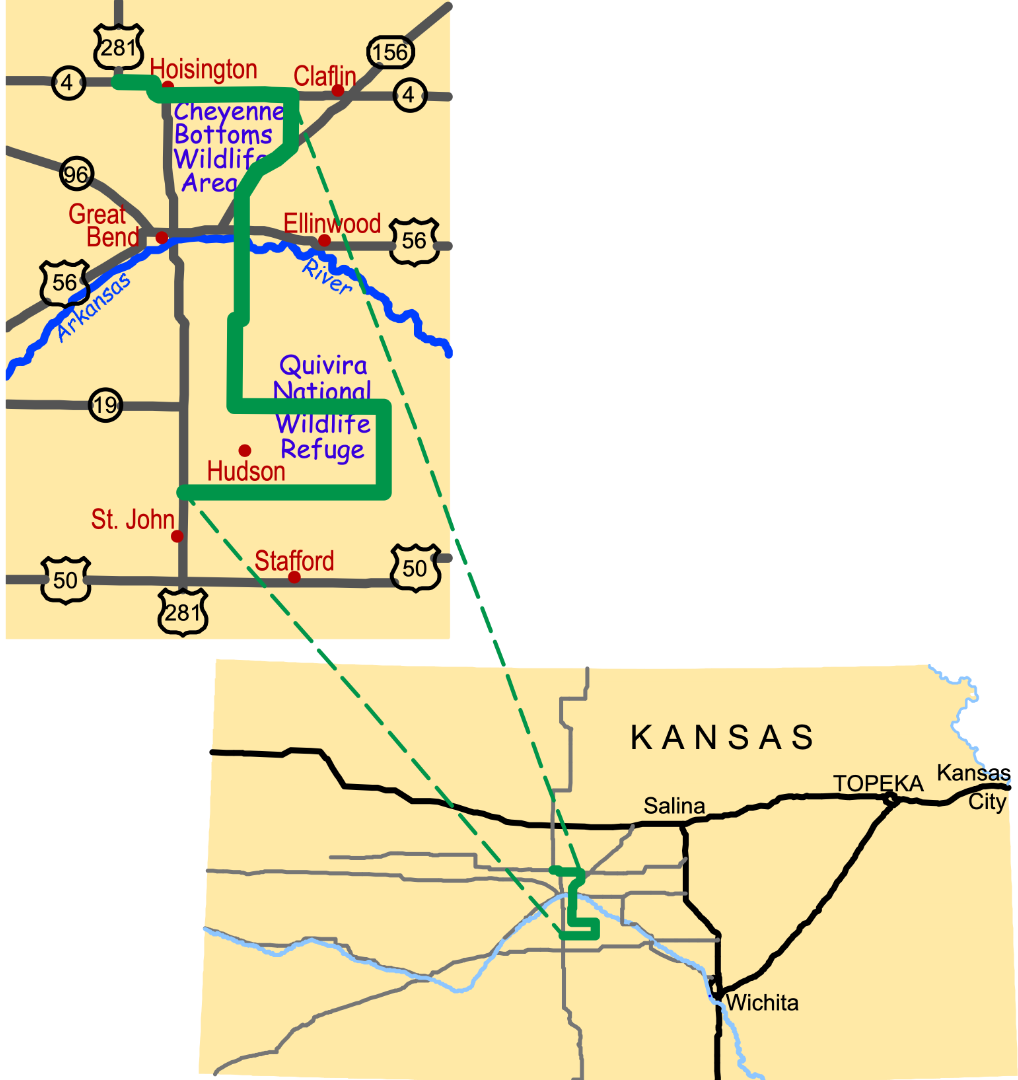Working...

Quivira National Wildlife Refuge
Wetlands Treasure
There remain only a handful of natural places on this planet that display a vast, timeless landscape, places like the Serengeti, the Everglades, and the Amazon. Named a "Wetland of International Importance" by the Ramsar Convention on Wetlands, Quivira National Wildlife Refuge is another of those rare spots. The refuge's 22,000 acres of salt marsh, wetlands, and prairie allow visitors to experience a landscape little changed from when Coronado camped here.
Quivira National Wildlife Refuge conserves land that has long sustained an astounding abundance of wildlife. Unlike nearby Cheyenne Bottoms, some of the marshes here are salty. In this area, fresh groundwater rests on a layer of salt water. An upthrust in the bedrock forces salt water into Rattlesnake Creek and nearby springs. Evaporation can make the marshes far saltier than the ocean. The salt flats around these marshes are the preferred breeding habitat for increasingly rare birds like the least tern and snowy plover.
Refuge Birds
Hundreds of thousands of ducks, geese, and shorebirds migrate through these marshes, including sandhill cranes, and whooping cranes*. Peregrine falcon, Swainson's hawk, and bald eagle soar over the refuge. Ring-necked pheasant, northern bobwhite (quail), and wild turkey are often seen foraging in the fields.
Motion and Change
Refuge staff mimics natural patterns when managing Quivira National Wildlife Refuge**. Bison once roamed these grasslands. Now cattle graze here, carefully managed to replicate the beneficial effects of bison herds. Lightning strikes and native peoples ignited fires that encouraged lush new grasses. Likewise, the refuge uses fire to enhance the prairie.
Quivira National Wildlife Refuge Fact Sheet
Download the interpretive panel: Quivira National Wildlife Refuge Panel located at the Quivira Scenic Overlook on NE 140th St.
To listen to more information click on the Audio Tour Track #7
Go to the Gallery to view photographs contributed by visitors to the Byway.
* Whooping Cranes
Whooping cranes, an endangered species once reduced to only 16 individuals during the 1940s, also rely on Quivira's wetland habitats. From mid-March to mid-April, whooping cranes pass through the Refuge. The cranes move through quickly in the spring, often only staying overnight as the breeding urge pushes them northward. In the fall migration, usually during October, the whoopers may spend up to two weeks on the Refuge, going slower as the young of the year make their first trip south. The west edge of the Big Salt Marsh is one of their favorite roosting areas. Up to 19 whooping cranes, out of wild population of approximately 175, have been recorded using this area at one time.
** Managing Quivira National Wildlife Refuge
Quivira NWR is managed primarily to provide migratory waterfowl with food, water, and shelter. Other migratory birds, endangered species, and resident wildlife, such as deer and pheasant, also benefit from these habitat management programs, which include cooperative farming, rotational grazing, prescribed burning, and water control.
Though Quivira is understandably famous for its wetlands, the largest habitat type on the Refuge is actually grasslands, which cover 13,000 acres. These areas provide excellent cover, nesting, and feeding habitat for ground-nesting bird species such as quail and meadowlarks. They're also hunting grounds for coyotes and many species of raptors such as red-tailed, Cooper's, and sharp-shinned hawks. As you explore the park, watch the grassland areas for white-tailed deer, red fox, raccoon, bobcat, prairie dog, badger, and other upland mammal species.
For more information visit the Quivira National Wildlife Refuge website. Quivira National Wildlife Refuge
More Wetlands pages...



